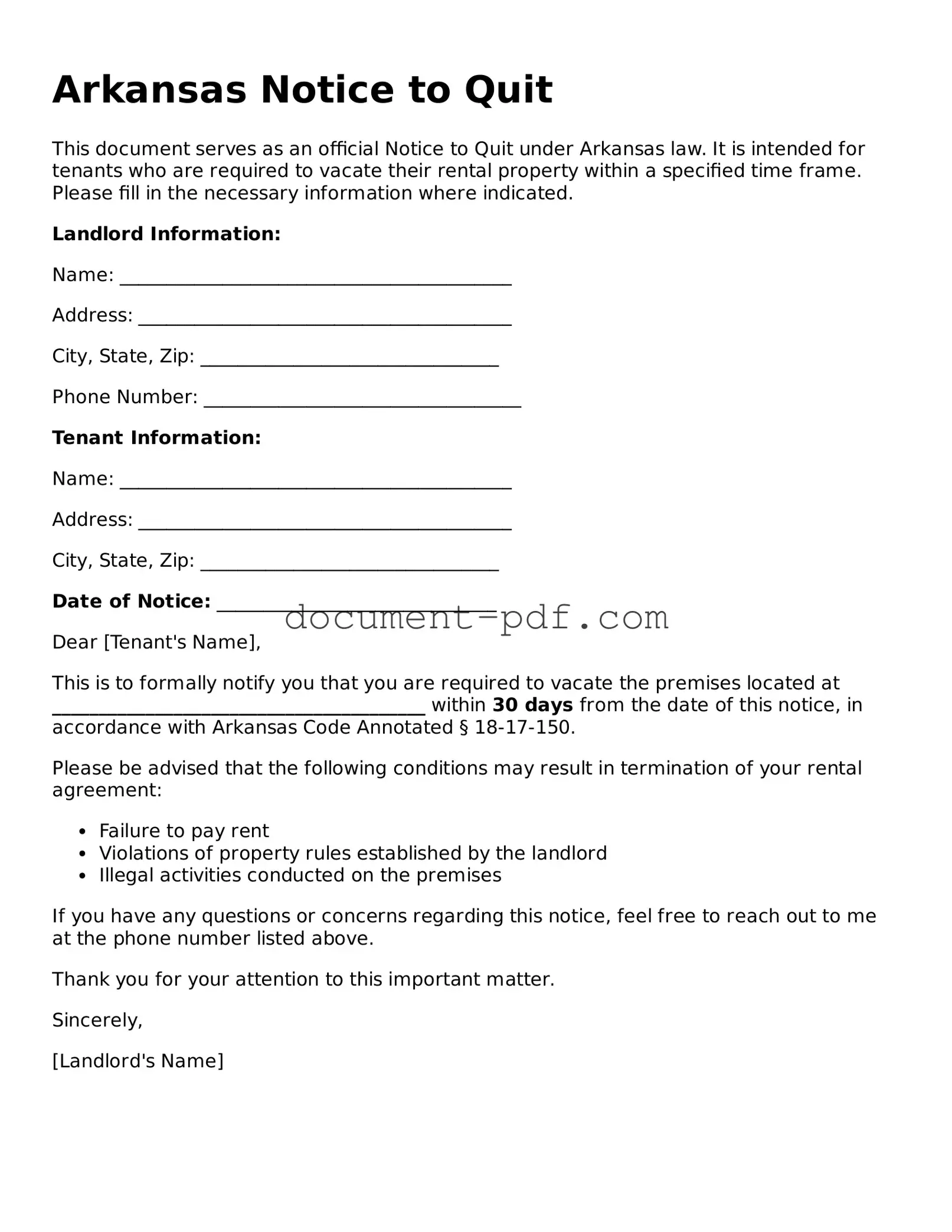Arkansas Notice to Quit
This document serves as an official Notice to Quit under Arkansas law. It is intended for tenants who are required to vacate their rental property within a specified time frame. Please fill in the necessary information where indicated.
Landlord Information:
Name: __________________________________________
Address: ________________________________________
City, State, Zip: ________________________________
Phone Number: __________________________________
Tenant Information:
Name: __________________________________________
Address: ________________________________________
City, State, Zip: ________________________________
Date of Notice: ______________________________
Dear [Tenant's Name],
This is to formally notify you that you are required to vacate the premises located at ________________________________________ within 30 days from the date of this notice, in accordance with Arkansas Code Annotated § 18-17-150.
Please be advised that the following conditions may result in termination of your rental agreement:
- Failure to pay rent
- Violations of property rules established by the landlord
- Illegal activities conducted on the premises
If you have any questions or concerns regarding this notice, feel free to reach out to me at the phone number listed above.
Thank you for your attention to this important matter.
Sincerely,
[Landlord's Name]
